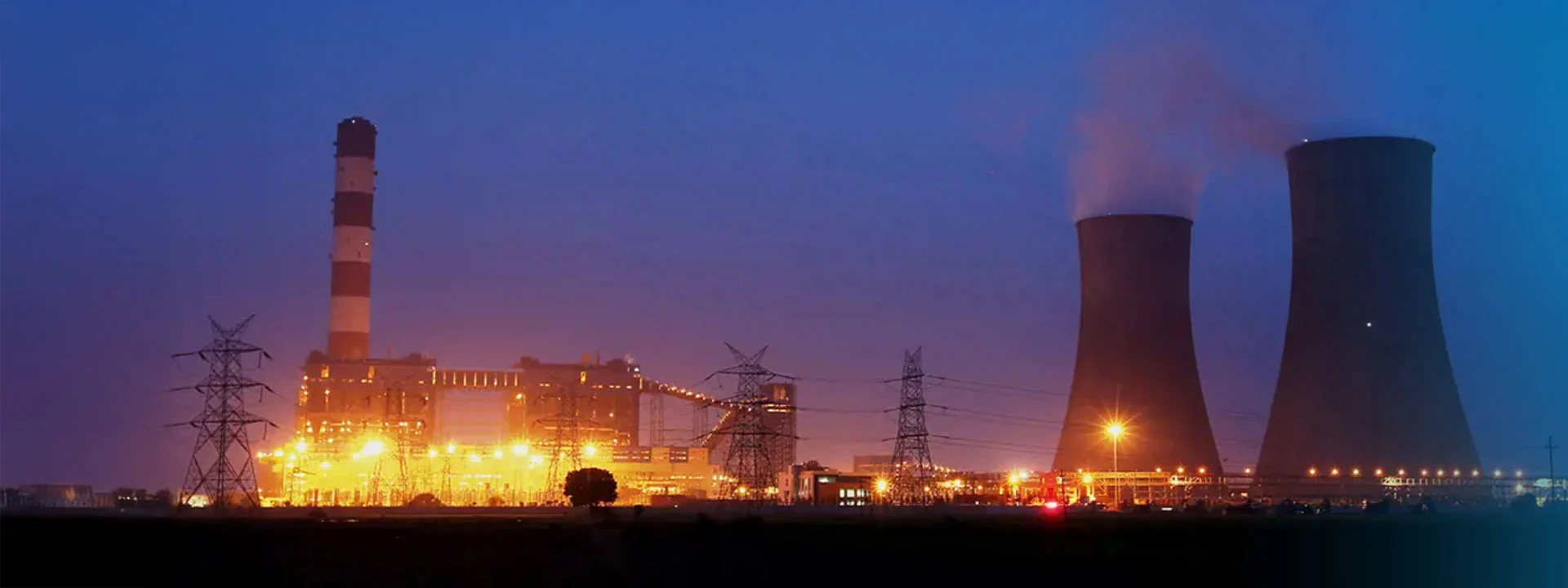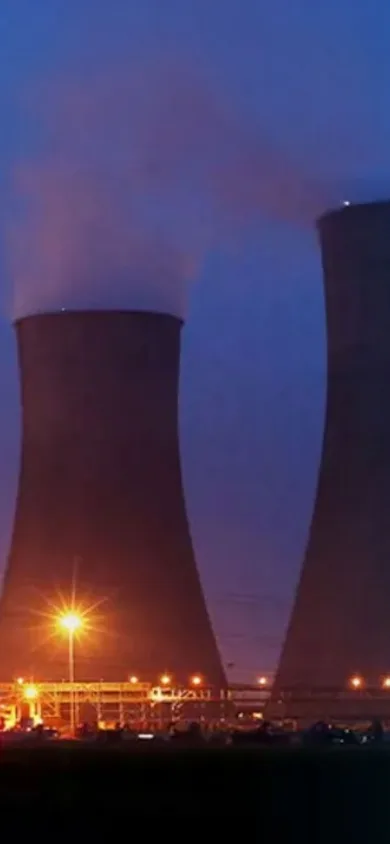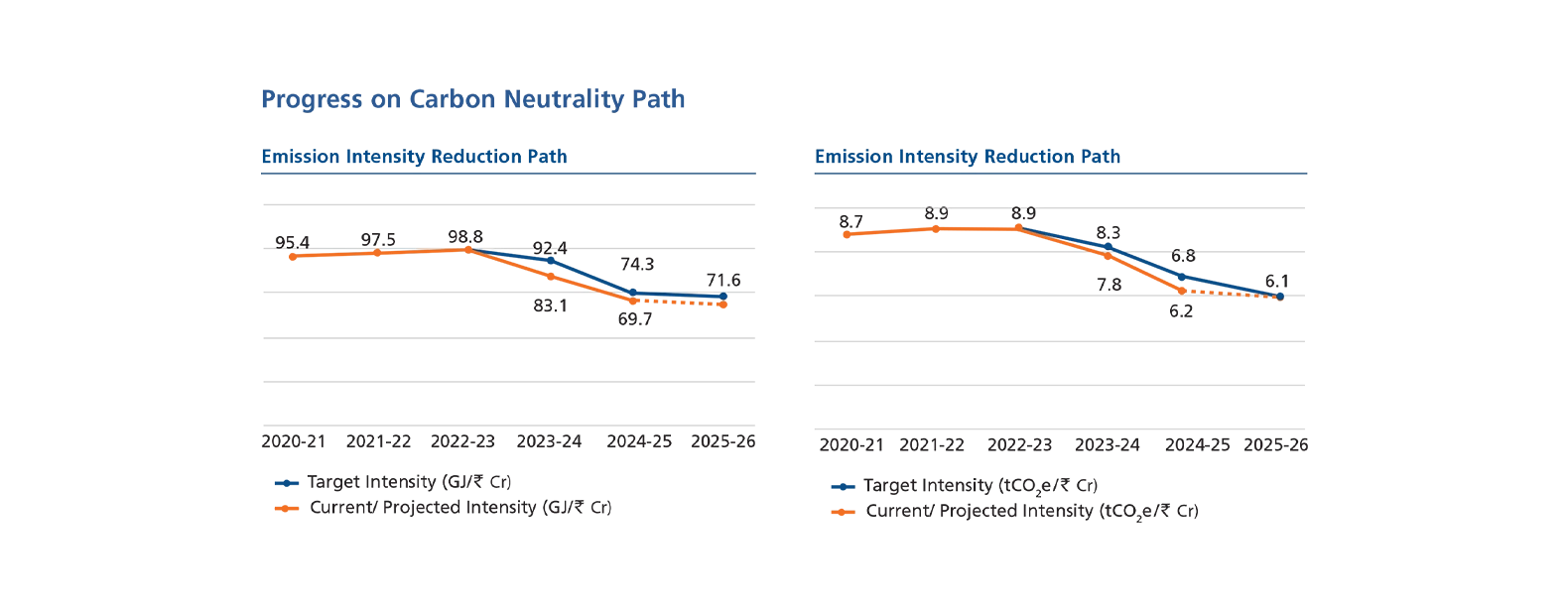- Sustainability
- Planet
- Energy And Emissions
ENVIRONMENT
We believe that ‘Tech-Celerating Sustainable Progress’ is not just an ambition - it is a shared responsibility. Through optimal use of energy, decarbonizing energy consumption through renewable energy, reducing water consumption, waste minimisation and management, use of recycled material and adopting sustainable processes, we aim to keep amplifying our positive impact on the planet and its people, thus creating a meaningful impact for our stakeholders. We have committed towards achieving carbon and water neutrality, and a snapshot of progress made is showcased here.
ENERGY
In FY 2024-25, the Company’s total energy consumption was 9.9 million GJ, comprising direct energy consumption of 8.3 million GJ and indirect energy consumption of 1.6 million GJ. Total energy intensity has decreased by 16% compared to FY 2023-24 and 27% compared to FY 2020-21 (baseline). The Company sourced 69 million kWh of renewable electricity, contributing to 15% of the total electricity consumption (461 million kWh) in FY 2024-25. As a result of the actions taken by the various business units of the Company, renewable energy (electricity) increased from 0.16 million GJ in FY 2023-24 to 0.25 million GJ in FY 2024-25, marking an increase of 60%.
EMISSIONS
Emissions attributed to L&T’s operations arise primarily from the use of fossil fuels, electricity, and material in its operations and processes. Emissions (Scope 1+2) intensity has decreased by 20% in FY 2024-25 compared to FY 2023-24 primarily due to a reduction in energy intensity.
Scope 1 Emissions arise from consumption of fuels such as petrol, high-speed diesel, furnace oil, natural gas, LPG, CNG, and acetylene in various construction machinery, diesel generators, and furnaces. Scope 2 Emissions arise from consumption of grid electricity, sourced from DISCOMs, in various machinery, manufacturing facilities, and offices. Scope 3 Emissions are currently being reported based purchased goods, upstream transportation and distribution, employee commuting, business travel and downstream leased assets.



